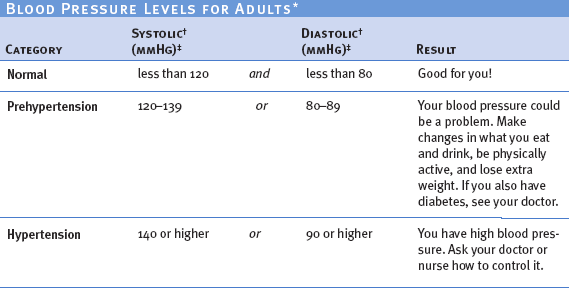| |
|

A blood pressure level of 140/90 mmHg or higher is considered high. About two-thirds
of people over age 65 have high blood pressure. If your blood pressure is between
120/80 mmHg and 139/89 mmHg, then you have prehypertension. This means that you
don’t have high blood pressure now but are likely to develop it in the future unless you
adopt the healthy lifestyle changes described in the guide.
(See box 2.)
People who do not have high blood pressure at age 55 face a 90 percent chance of
developing it during their lifetimes. So high blood pressure is a condition that most
people will have at some point in their lives.
Both numbers in a blood pressure test are important, but for people who are age 50
or older, systolic pressure gives the most accurate diagnosis of high blood pressure.
Systolic pressure is the top number in a blood pressure reading. It is high if it is
140 mmHg or above.
| | |

|
box 2
* For adults ages 18 and older who are not on medicine for high blood pressure and do not have a short-term serious illness. Source: The Seventh
Report of the Joint National Committee on Prevention, Detection, Evaluation, and Treatment of High Blood Pressure; NIH Publication No. 03-5230,
National High Blood Pressure Education Program, May 2003.
† If systolic and diastolic pressures fall into different categories, overall status is the higher category.
‡ Millimeters of mercury.
|
|
|
|
|
